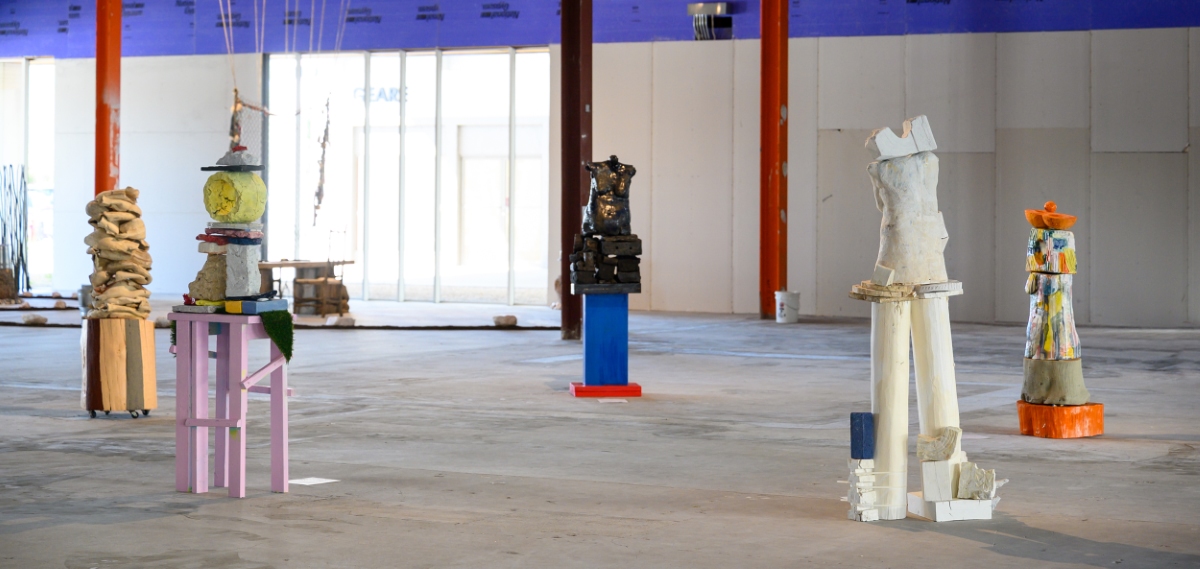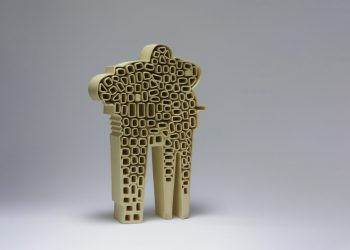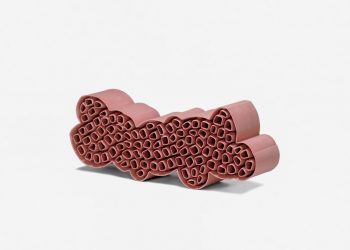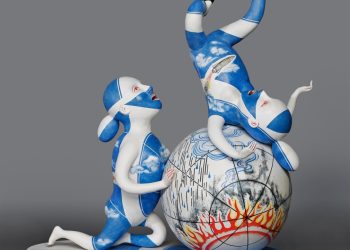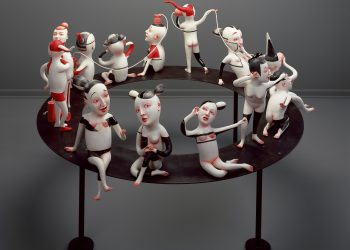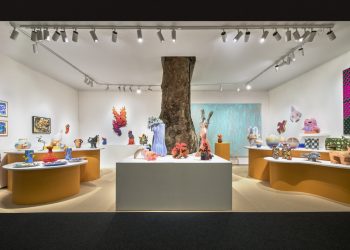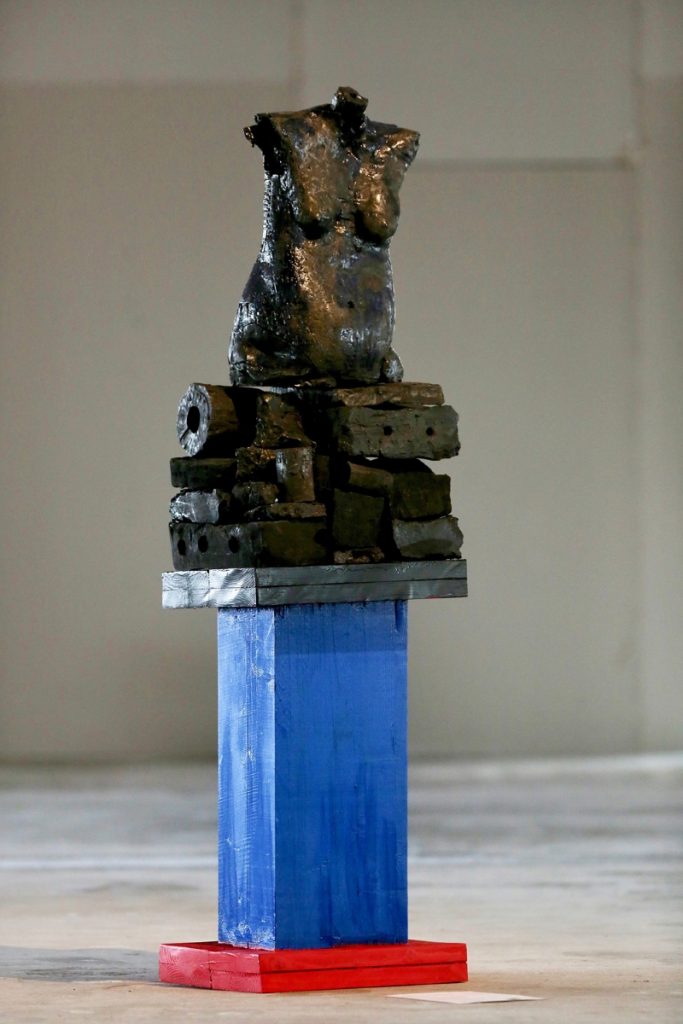
Caryatid: Black Not Black, 2020, fired clay, glazes and oxides, lumber, enamel paint, 183 x 45 x 61 cm 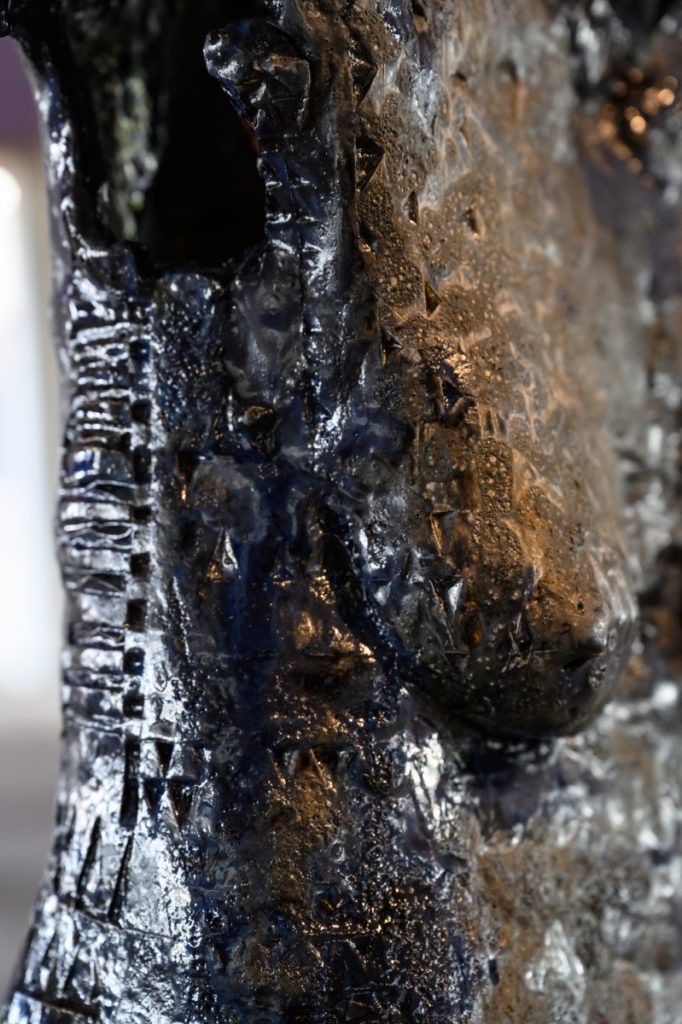
Caryatid: Black Not Black 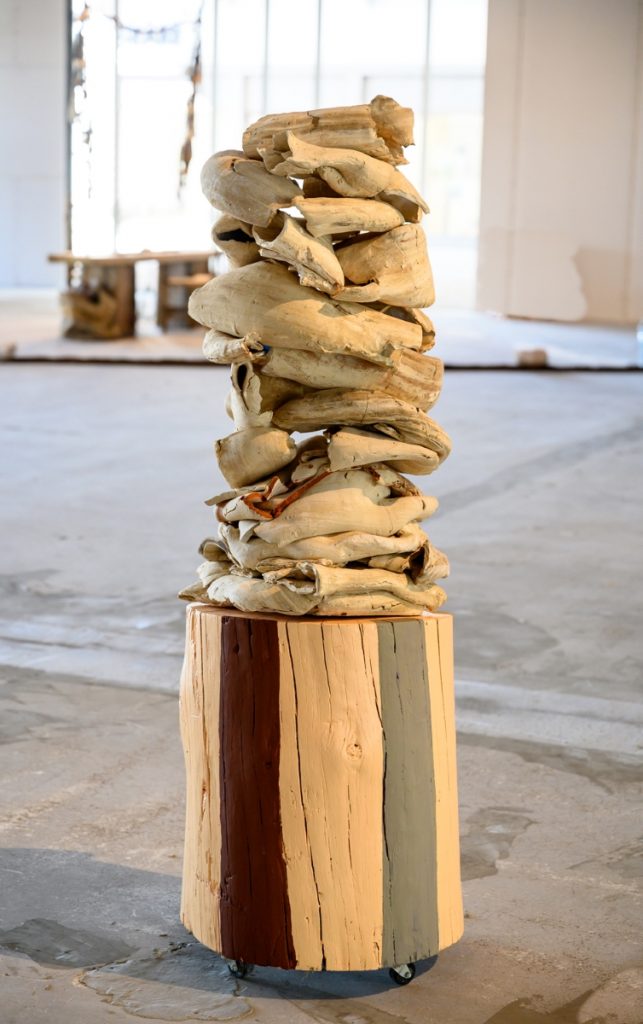
Caryatid: Mother, Oh Mother, 2020, fired clay, tree stumps, enamel paint, 180 x 90 x 90 cm 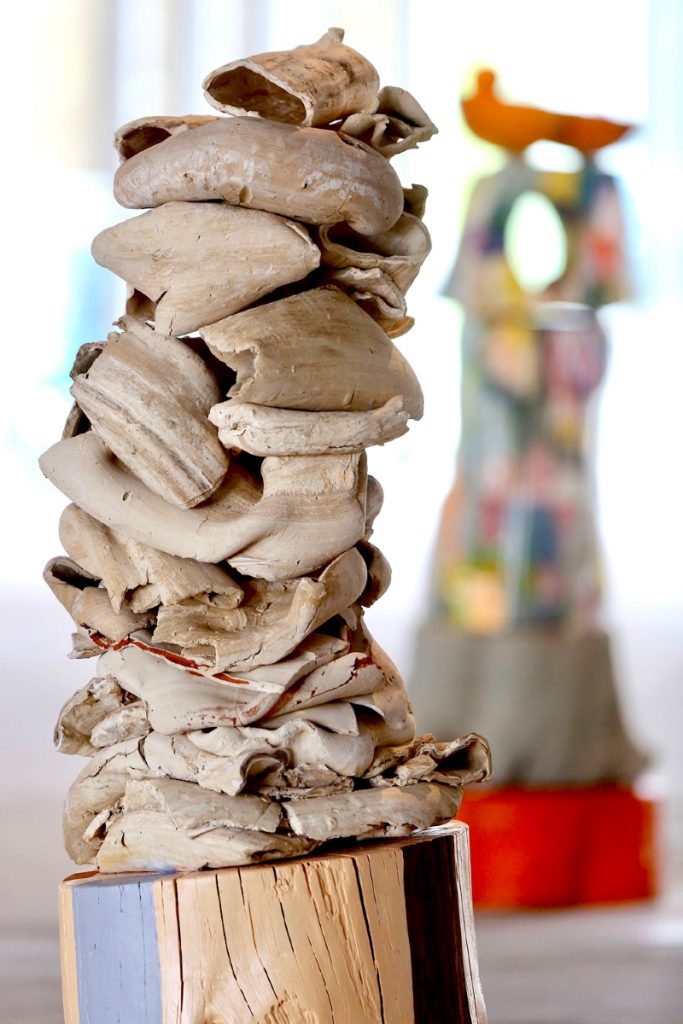
Caryatid: Mother, Oh Mother 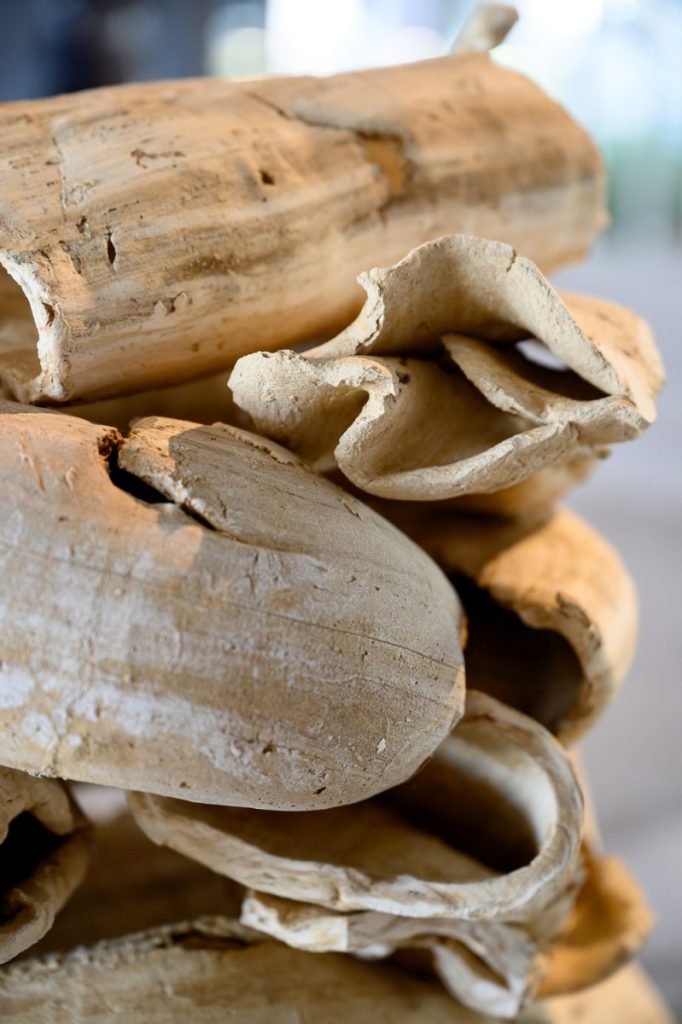
Caryatid: Mother, Oh Mother 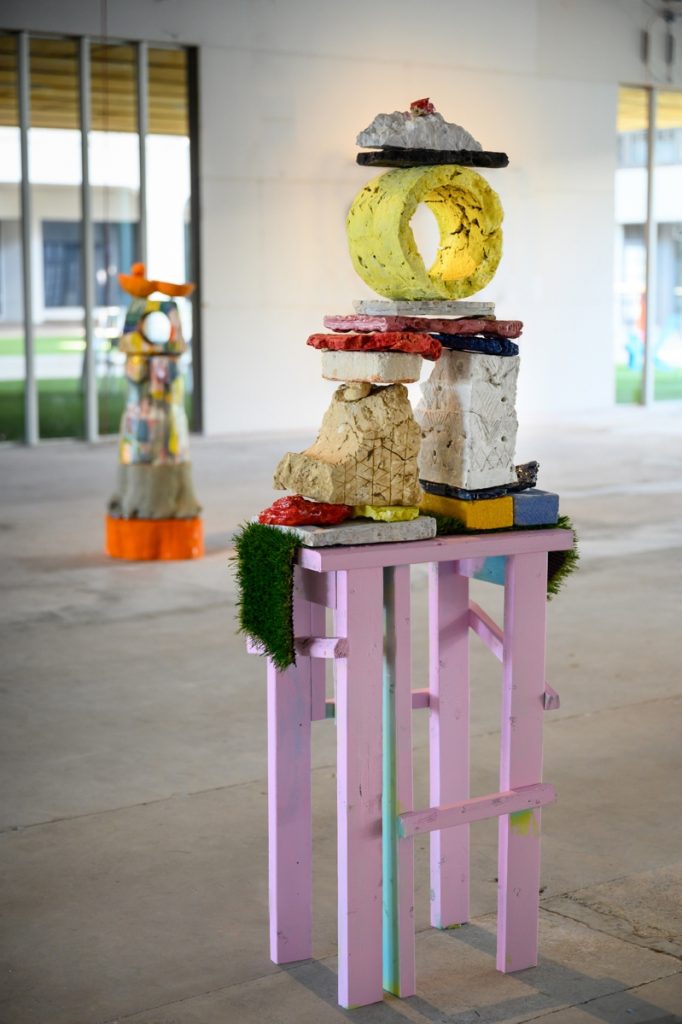
Caryatid: Showing the Way, 2020, clay, oxides, alumina hydrate, lumber, paint, 153 cm x 38 cm x 60 cm 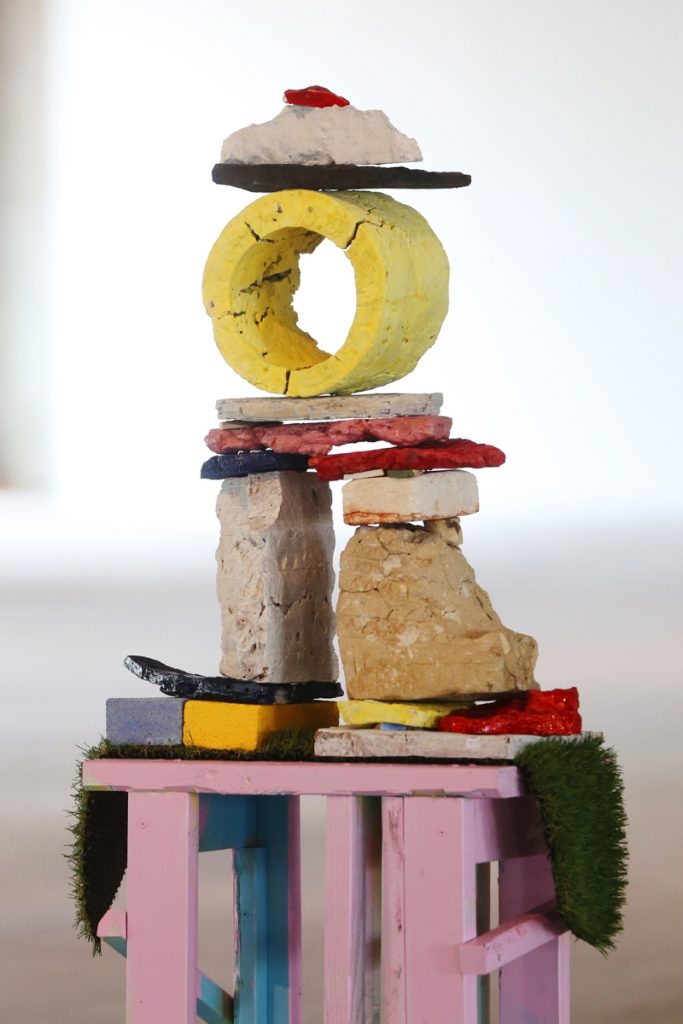
Caryatid: Showing the Way 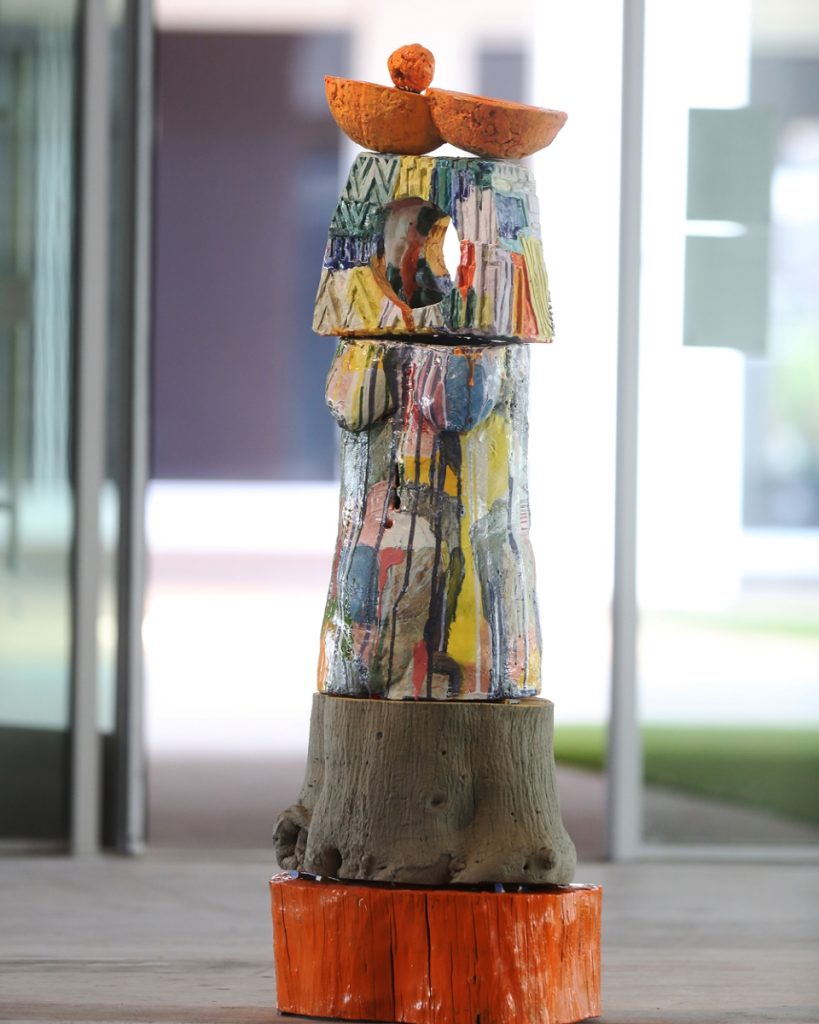
Caryatid: Just Like Real Life, 2020, fired clay, glazes and oxides, tree stumps, enamel paint, 163 x 53 x 50 cm 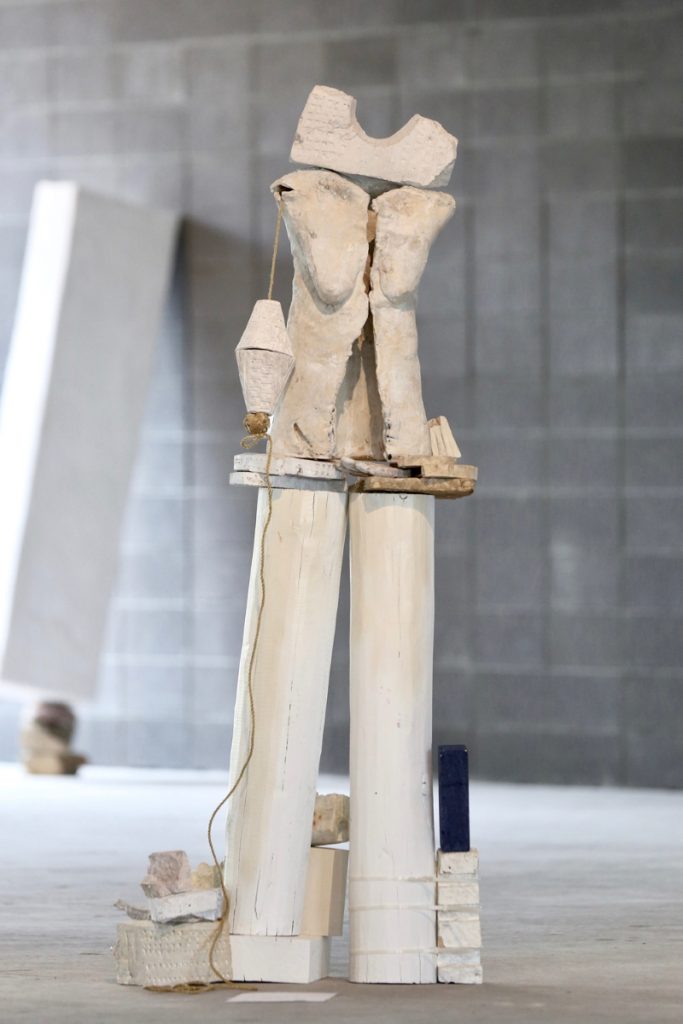
Caryatid: Myth of White, 2020, clay, oxides, alumina hydrate, lumber, paint, caulk, zip ties, rope, fire brick, post, 213 x 38 x 60 cm 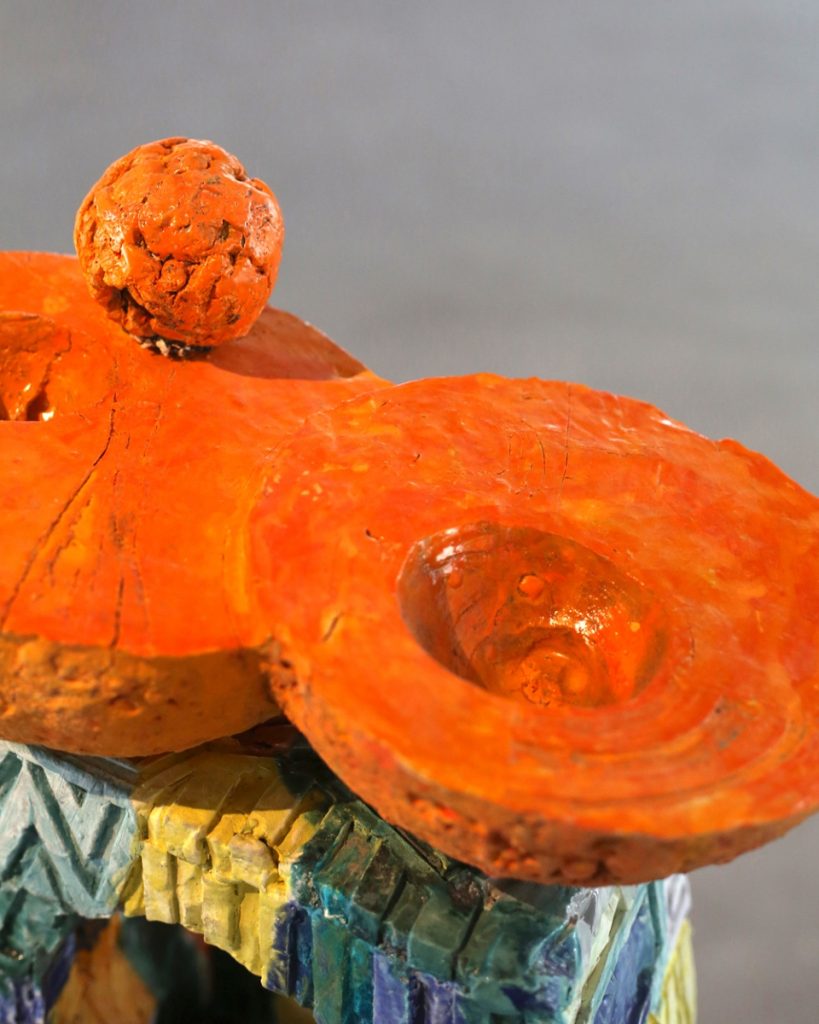
Caryatid: Just Like Real Life 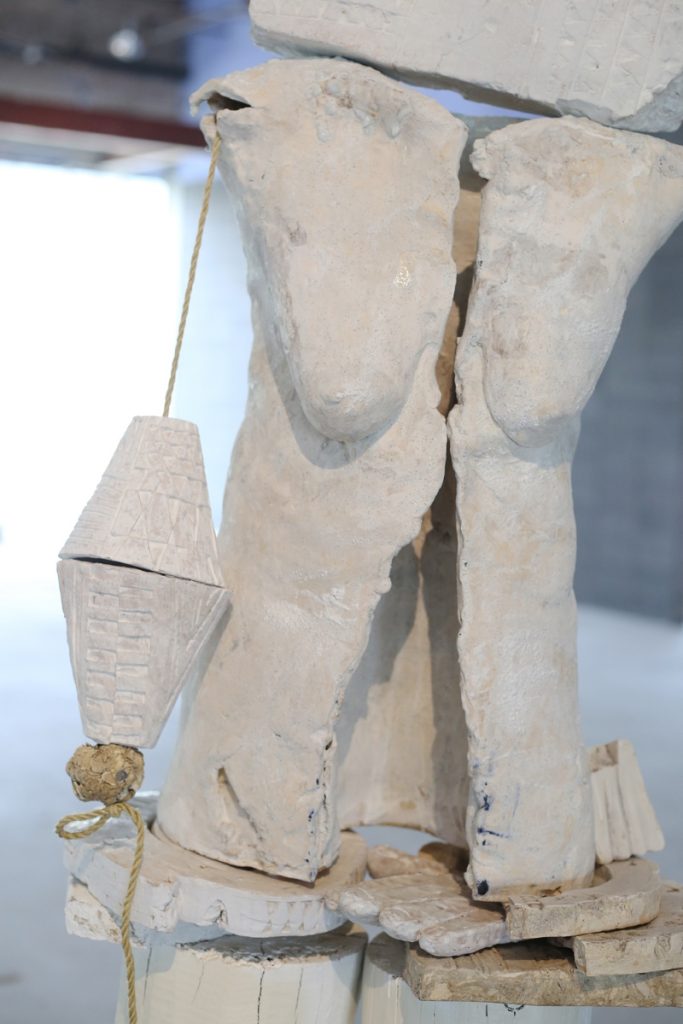
Caryatid: Myth of White
Patricia Sannit: Caryatids – Still Standing Still, 2020
Still Standing Still is my new body of work, a departure for me as it is polychromatic. This has been a year of introspection, challenge, self-inquiry and evaluation and this work is a step on the trail of that ongoing process. I shifted to working in color partly to find some joy in my studio practice, but the deeper motivation was the result of self-questioning my presumptions. I had read an article, Why We Need to Start Seeing the Classical World in Color, from the June 7, 2017 issue of Hyperallergic. This topic of this article was followed up by many writers in various publications, so my initial interest in interrogating the myth of whiteness was steadily nurtured. The thesis resonated with me, as my work has predominately been white over the years, though my color choice was more about the nakedness of the surface and my appreciation of raw clay. However, I have also come to realize that the origins of my aesthetic come from a certain reverence for antiquity.
The dominance of the classical/Euro/Western canon in shaping our aesthetic response is now regularly questioned. Our assumptions about beauty having been shaped by a limited knowledge of art history told through the lens of dominant class. I had thought that painting or glazing my work gave it a false skin and that the work “naked” was more authentic. But as I thought more about what was implied by the whiteness, or even the purity of the unadulterated surface, I questioned my notions of beauty, taste, and the meaning of authenticity. So, these new pieces come out of that exploration. I used the classical form of the Caryatid to structure the exploration, and the pieces in the series are more and less abstracted from the figure. Not surprisingly, the earlier pieces of the series are the most figurative, the most “classical” and the last ones, the most abstract and the ones that deconstruct the figure.
Photos by Lisa Olson


